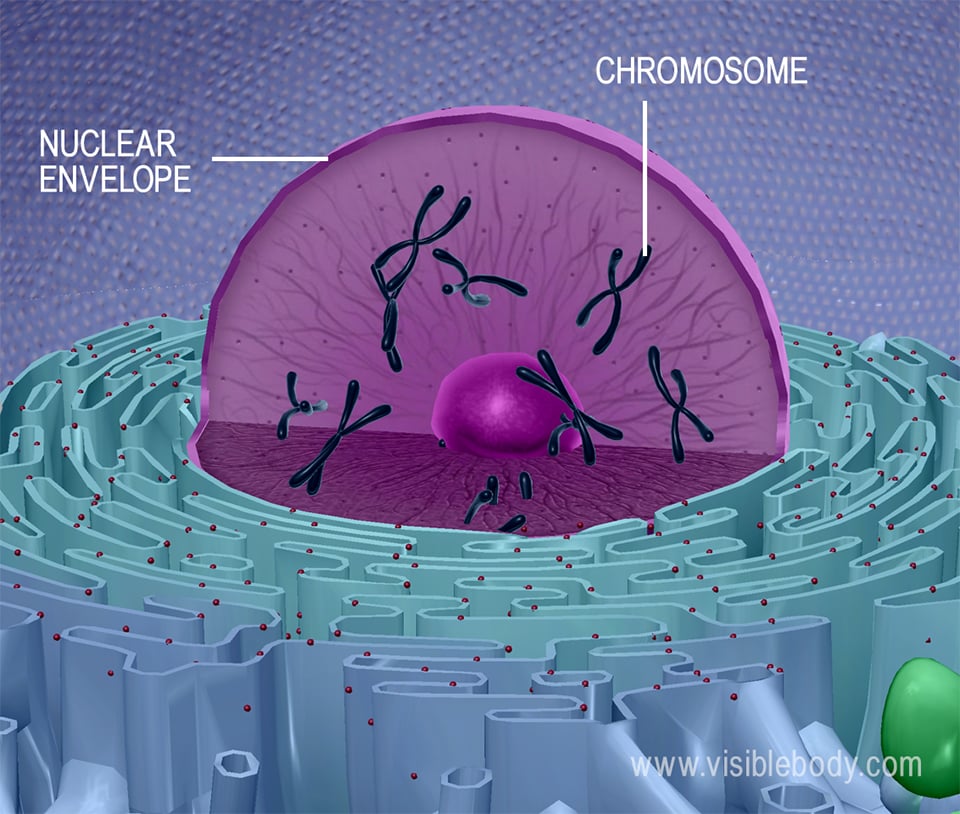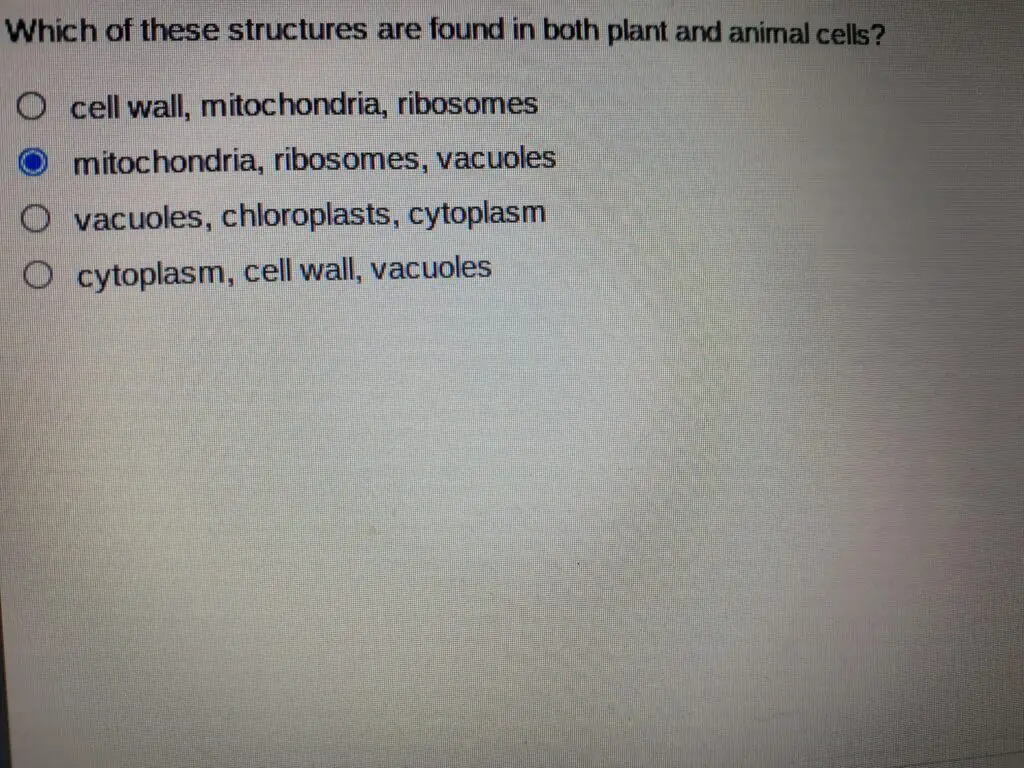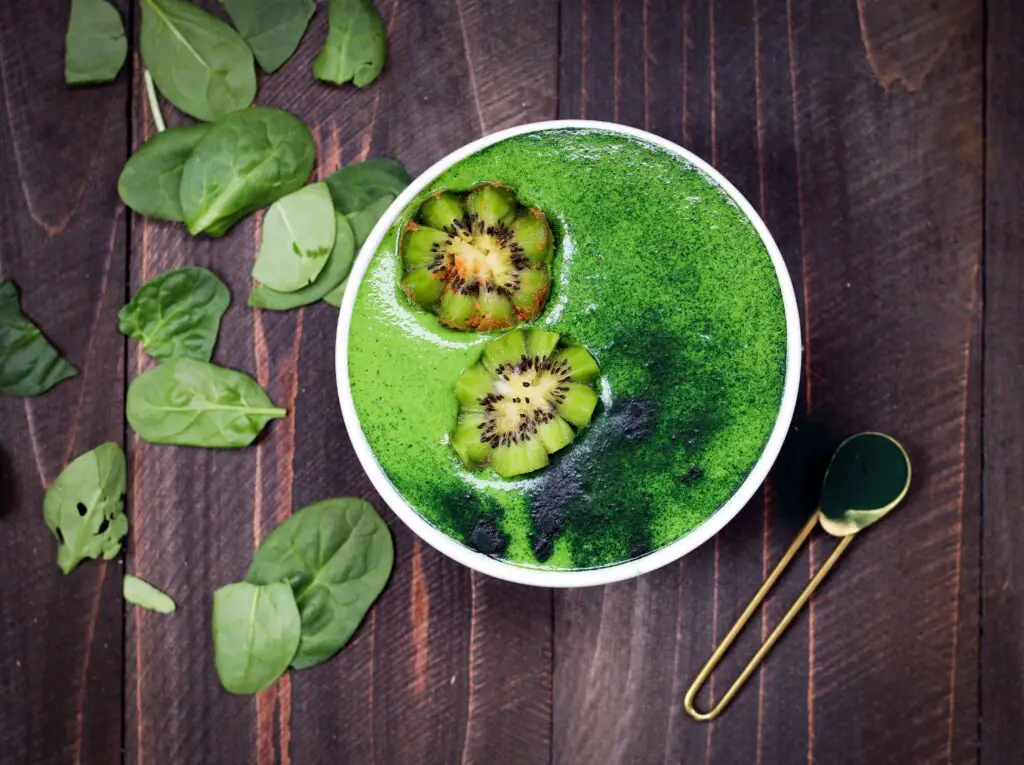Yes, cell walls are found in plant cells but not in animal cells. Plant cells have a rigid cell wall made of cellulose, hemicellulose and pectin, which provides support and protection to the cell.
Animal cells do not have a cell wall, but instead, have a flexible cell membrane made up of lipids and proteins. The cell membrane regulates the movement of substances in and out of the cell. Both cell walls and cell membranes are crucial for the survival and function of plant and animal cells respectively.
Understanding the differences in cellular structures is important in fields such as biology, agriculture and medicine. In this article, we will delve deeper into the topic of cell walls, their functions, and their significance in plant biology.

Credit: www.visiblebody.com
Structure And Composition Of Cell Walls
Plant and animal cells have many similarities and differences, but one significant difference is the presence of cell walls. Cell walls are only found in plant cells and not in animal cells. In this section, we will delve into the structure and composition of cell walls, their major constituents and the differences between plant and animal cells.
Detailed Description Of The Cell Wall Structure
Cell walls form the outermost layer of a plant cell and provide support, protection, and shape to the cell. They are made up of several layers, including the primary cell wall, secondary cell wall (in some plant cells) and middle lamella, which is a thin layer between plant cells.
The primary cell wall is composed of cellulose, hemicelluloses, and pectin, whereas the secondary cell wall consists mainly of lignin, which makes it stronger and more rigid than the primary cell wall.
The Major Constituents Of The Plant Cell Wall
The major constituents of the plant cell wall are cellulose, hemicelluloses, and pectin. Cellulose, a polysaccharide made up of long chains of glucose molecules, makes the plant cell wall rigid and provides strength and protection. Hemicelluloses are also polysaccharides but are different from cellulose in composition.
Pectin is a glycoprotein that helps to hold the plant cells together and is involved in various functions such as cell-to-cell communication, cell adhesion, and regulation of cell growth.
Differences In The Cell Wall Composition Between Plant And Animal Cells
Plant cell walls are made up of cellulose, hemicelluloses, and pectin, while animal cells lack cell walls. Instead, they have a cell membrane made up of phospholipids and proteins that serves as a boundary between the inside and outside of the cell.
The cell membrane allows for the exchange of materials between the cell and its environment and protects the cell from harmful substances and viruses.
The Role Of Cellulose In Plant Cell Walls
Cellulose is the key structural component of the plant cell wall, providing strength and rigidity to the cell. It is the most abundant organic compound on earth and is essential for the survival and growth of plants. Cellulose is important in plant development, providing support and shape to growing tissues, such as the stem and leaves.
It is also involved in various physiological functions like water uptake, cell-to-cell communication, and nutrient uptake.
Plant and animal cells have distinct differences in their cell wall composition, which plays a crucial role in the survival and growth of plants. Cell walls provide an essential function in plant growth, providing support, strength and protection to the cell.
Understanding the structure and composition of the cell wall is crucial in plant biology and can help in developing sustainable agricultural practices.
Functions Of Cell Walls
The Role Of Cell Walls Of Plants In Providing Mechanical Support
Plant cells are unique in that they possess a cell wall comprising cellulose, hemicellulose, and pectin. The cell wall, which is the outermost layer, is rigid and provides shape and structure to the cell. Some key roles of cell walls in plant cells include:
- The cell wall helps to maintain the shape of the plant by providing mechanical support to both the cell and the whole organism.
- The cell wall protects the cell from being damaged or ruptured under extreme environmental conditions such as osmotic stress.
- The cell wall helps regulate the movement of water and nutrients between the plant cells.
The Protective Role Of Cell Walls And How They Help In Defense Against Predators And Pathogens
The cell wall not only provides physical support but also plays a vital role in protecting the cell from pathogens and predation. It provides a barrier to the external environment and serves as a defense mechanism for the cell by:
- Preventing the entry of pathogens such as bacteria and viruses, which helps prevent plant diseases.
- Deterring predators such as herbivores and insects from consuming the plant by making the cell wall harder to digest or breaking down certain molecules that insects use to feed on.
The Contribution Of Cell Walls In Cell-To-Cell Communication
Cell walls within plant cells also have a vital role in cell-to-cell communication. In particular, the plasmodesmata, microscopic channels in the cell wall that connect adjacent plant cells, enable the exchange of molecules, nutrients, and even secondary messengers for:
- Advancing intercellular signaling processes
- Transmitting electrical signals through the plant.
The Significance Of Cell Walls For Plant Growth And Development
Cell walls play a distinctive role in plant growth and development. The cell expands through an intricate balance between the rigidity of the cell wall and the osmotic pressure generated by the growth of the cell. Cell walls are significant in plant growth and development by:
- Providing structure for plant tissues and organs, fulfilling distinct functions and aiding in the differentiation of cells and tissues.
- Contributing to the orientation of cell growth by positioning plant cell divisions to achieve specific developmental targets.
These are the fundamental functions of cell walls in plant cells. Cell walls are not found in animal cells, which means plant and animal cells are fundamentally different. Further research into cell wall composition and function can lead to innovative methods to improve crop yield and prevent plant diseases, both of which are critical for feeding the world’s population.
Comparative Analysis Of Cell Walls In Plant And Animal Cells
Cell walls are an essential component of plant cells that provides them with structural support and protection. Although animal cells do not have a cell wall, they have other structures that play a similar role in their functioning. In this section, we will compare and contrast cell walls in plant and animal cells.
Differences Between Animal And Plant Cells Regarding The Presence Of Cell Walls
- Animal cells lack cell walls, while plant cells have a rigid cell wall that surrounds their plasma membrane.
- The cell wall of a plant cell is made up of cellulose, hemicellulose, and pectin, while animal cells are composed mainly of collagen and elastin.
- The absence of a cell wall in animal cells enables them to take up different shapes and sizes.
How Animal Cells Replace The Function Of The Cell Wall
Although animal cells do not have cell walls, they have other structures that make up for the absence of cell walls, such as:
- Extracellular matrix (ecm): It is made up of glycoproteins, proteoglycans, and fibrous proteins, which provides structural support and cell adhesion.
- Cytoskeleton: Animal cells have internal support structures made up of microfilaments, intermediate filaments, and microtubules, which provide mechanical support to the cell.
Comparison Of The Plant And Animal Cell Wall Structural Differences
The structural differences between the plant and animal cells are as follows:
- The cell wall of plant cells is thicker and more rigid than that of animal cells.
- Unlike the animal cell, which has only one plasma membrane, the plant cell has two, the plasma membrane and the cell wall.
- The primary constituent of the plant cell wall is cellulose, while collagen is the main component of the animal’s extracellular matrix.
The Impact Of Cell Wall Differences On The Overall Functions Of Plant And Animal Cells
The differences in the structure of cell walls have significant impacts on the overall functions of plant and animal cells. For example:
- The cell wall in plant cells enables them to photosynthesize efficiently, while in animal cells, the absence of cell walls allows for cell movement and migration.
- The plant cell’s cell wall provides structural support that enables them to withstand hydrostatic pressure, while in animal cells, the ecm enables tissue differentiation and regeneration.
Cell walls are vital components that perform various functions in plant and animal cells. Although there are differences in the structure of cell walls between plant and animal cells, both have evolved to perform specific roles that enable them to thrive in their respective environments.
Despite the absence of a cell wall in animal cells, they have other structures that make up for its function.
Frequently Asked Questions For Are Cell Walls Found In Plant And Animal Cells
What Is A Cell Wall?
A cell wall is a tough, rigid outer layer found in plant, bacteria, and fungal cells. It provides structural support and protection for the cell.
Do Animal Cells Have Cell Walls?
No, animal cells do not have cell walls. Instead, they have a flexible cell membrane that acts as a barrier to protect the cell and control the movement of substances in and out of the cell.
What Is The Composition Of Cell Walls?
Plant cell walls are primarily made up of cellulose, a complex carbohydrate. Bacterial cell walls are made up of peptidoglycan, and fungal cell walls are made up of chitin.
What Function Does The Cell Wall Serve For Plant Cells?
The cell wall in plant cells provides support and protection for the cell and helps maintain its shape. It also regulates the movement of substances in and out of the cell.
How Does The Cell Wall Differ From The Cell Membrane?
The cell wall is a rigid outer layer found in plant, bacterial, and fungal cells, while the cell membrane is a flexible outer layer found in all cells. The cell membrane controls what enters and exits the cell, while the cell wall provides protection and support.
Conclusion
From this article, it is clear that cell walls are present in plant cells, whereas animal cells lack them. The cell wall is a rigid, protective layer that supports and maintains the shape of the plant cell. It also provides mechanical support that allows the plant to grow upright and helps to prevent the cell from bursting under pressure.
Although animal cells lack cell walls, they do have extracellular matrix, which performs similar functions. The extracellular matrix also provides structural support, regulates cell behavior, and facilitates cell-to-cell communication. Knowing the differences and similarities between plant and animal cells, as well as their unique structural features, is vital for understanding living organisms.
Both plant and animal cells have distinct characteristics that make them vital components of life on earth. It is fascinating to see how these cells have evolved over time to adapt to different environments and perform specialized functions.




